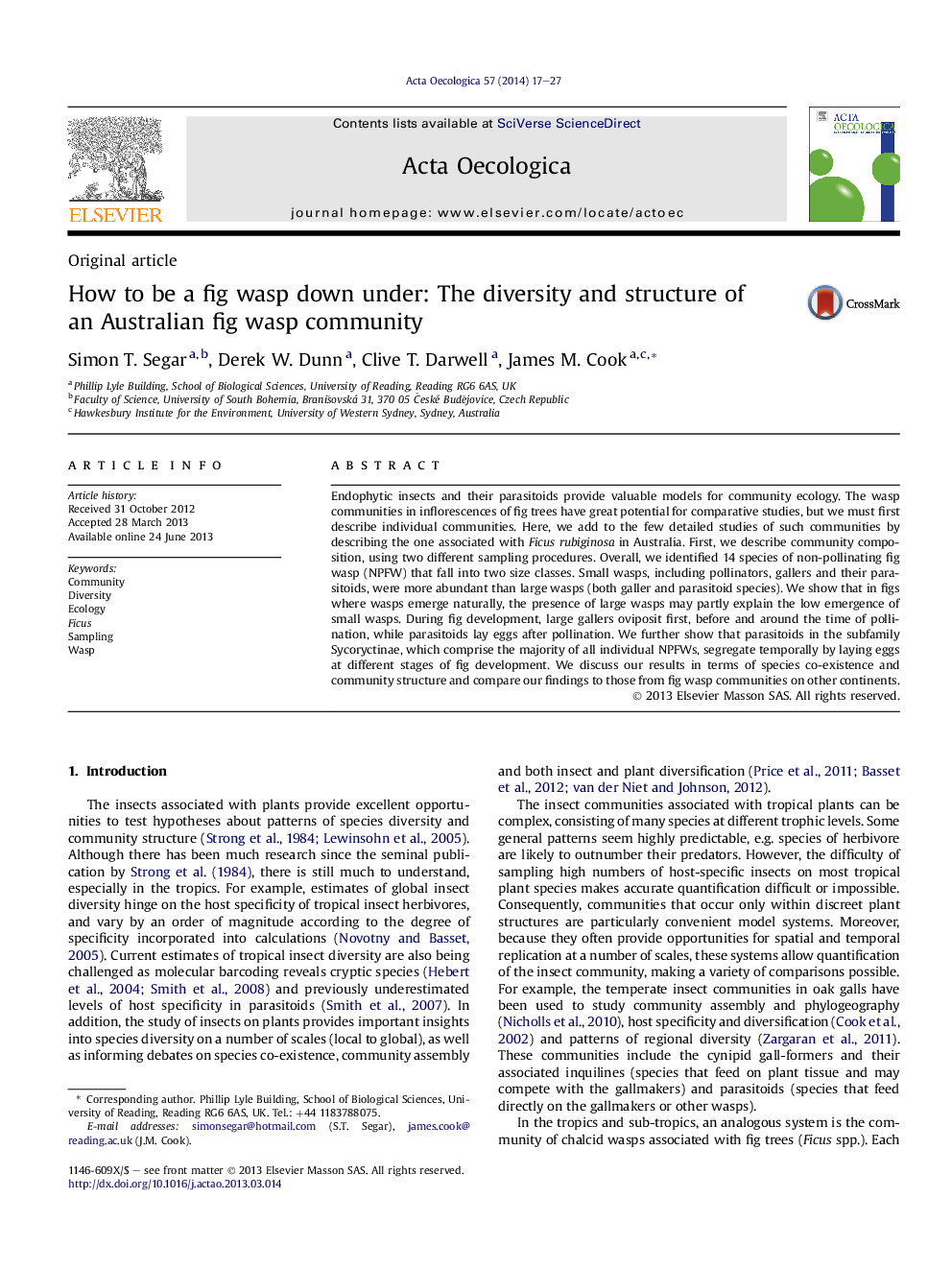| Article ID | Journal | Published Year | Pages | File Type |
|---|---|---|---|---|
| 4381034 | Acta Oecologica | 2014 | 11 Pages |
Abstract
Endophytic insects and their parasitoids provide valuable models for community ecology. The wasp communities in inflorescences of fig trees have great potential for comparative studies, but we must first describe individual communities. Here, we add to the few detailed studies of such communities by describing the one associated with Ficus rubiginosa in Australia. First, we describe community composition, using two different sampling procedures. Overall, we identified 14 species of non-pollinating fig wasp (NPFW) that fall into two size classes. Small wasps, including pollinators, gallers and their parasitoids, were more abundant than large wasps (both galler and parasitoid species). We show that in figs where wasps emerge naturally, the presence of large wasps may partly explain the low emergence of small wasps. During fig development, large gallers oviposit first, before and around the time of pollination, while parasitoids lay eggs after pollination. We further show that parasitoids in the subfamily Sycoryctinae, which comprise the majority of all individual NPFWs, segregate temporally by laying eggs at different stages of fig development. We discuss our results in terms of species co-existence and community structure and compare our findings to those from fig wasp communities on other continents.
Related Topics
Life Sciences
Agricultural and Biological Sciences
Ecology, Evolution, Behavior and Systematics
Authors
Simon T. Segar, Derek W. Dunn, Clive T. Darwell, James M. Cook,
